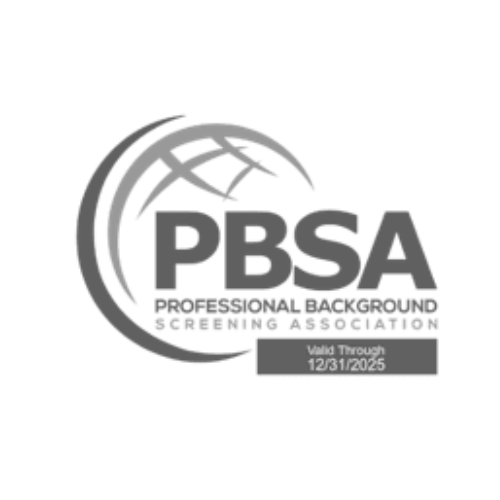A government regulation changes overnight. A data privacy law shifts across borders. A vendor deal hinges on compliance exposure in another country. These aren’t headline-grabbing events. But they quietly shape how hiring decisions get made, which roles carry risk, and where your workforce strategy holds, or unravels.
In most HR plans, what’s outside the organisation still feels like background noise. But ignoring external forces is no longer an option. Economic, regulatory, social, and environmental signals are moving faster, and the cost of not reading them correctly often shows up in hiring delays, workforce gaps, or avoidable compliance headaches.
This isn’t about trendwatching. It’s about building real alignment between what HR is planning and what the external environment now demands.
The External Reality HR Can’t Ignore Anymore
Disruption doesn’t always hit the balance sheet first. It often shows up in talent risk, culture misalignment, or regulatory oversight that wasn’t planned for.
In industries like banking, manufacturing, and energy, we’ve already seen this play out:
- A central bank policy changes how risk officers are certified, and suddenly hundreds of profiles need re-verification.
- A geopolitical escalation restricts cross-border mobility, and talent plans built on international transfers fall apart.
- A new AI-driven tool reshapes what “compliance” means in frontline operations, but the job descriptions haven’t caught up.
These aren’t hypothetical. They’re happening now. And HR is either ready for them or cleaning up after them.
Five External Forces That Are Reshaping HR Strategy Right Now
We’re not naming models like PESTEL here, but we are using them to frame what’s changing. Let’s focus on what’s real.
1. Policy & Geopolitics: Why Hiring Can’t Be Border-Blind Anymore
International hiring has never been simpler technically, but it’s rarely been more complex politically. Visa requirements are tightening, regional sanctions lists are changing monthly, and workforce mobility is no longer just a payroll issue.
What HR needs to do:
- Stay connected with compliance on evolving regulatory exposure.
- Re-evaluate mobility assumptions in strategic workforce plans.
- Ensure your verification scope includes real-time sanctions and PEP (politically exposed person) checks, especially for roles tied to finance, trade, or government-facing work.
2. Economic Pressure Is Quietly Changing Talent Expectations
Layoffs, cost cuts, and wage inflation aren’t just headlines; they’re recalibrating how talent evaluates employers. Workers are more cautious, some roles are harder to fill, and new jobs are getting scrutinised for long-term viability, not just compensation.
What HR needs to do:
- Use external labour market data to map hiring challenges by location or role.
- Adjust role marketing to reflect economic sentiment, not just business optimism.
- Build in retention risk monitoring for roles in volatile or cost-sensitive functions.
3. Social Shifts Are Becoming Business Risks, Not Just Culture Conversations
DEI expectations, employee activism, and values alignment have moved from internal engagement topics to full-scale employer brand differentiators. Misalignment here doesn’t just impact culture; it affects customer trust, investor relations, and candidate pipelines.
What HR needs to do:
- Track employee sentiment trends at industry and regional levels.
- Build feedback loops that reach beyond engagement surveys.
- Rethink adverse media and reputational checks during hiring; these aren’t only about the company’s image, but how a new hire’s track record fits into an already scrutinised culture.
4. Tech Acceleration Is Redefining Jobs Faster Than Policies Can Keep Up
In BFSI, healthcare, logistics, and more, automation and AI are rapidly evolving what a “job” even means. HR can’t rely on static competency frameworks or standard background checks when the roles themselves are shifting underfoot.
What HR needs to do:
- Involve talent teams earlier in tech adoption cycles to re-map impacted roles.
- Reskill and re-certify based on what the job now demands, not what it used to.
- Re-scope background checks for roles gaining access to data, systems, or decisions they didn’t handle before.
5. Environmental & Legal Pressures Are Quietly Expanding HR’s Scope
From ESG-linked disclosure obligations to location-based climate risks, environment and law are not passive forces anymore. They’re driving where people work, what benefits they expect, and what liabilities HR might carry.
What HR needs to do:
- Assess environmental risks by region, especially for field and remote teams.
- Factor ESG goals into wellbeing, mobility, and learning strategies.
- Collaborate with legal to stay ahead of background screening law changes, especially in jurisdictions tightening rules around privacy, bias, or data handling.
What You Can Do Differently — Starting Now
Forget long planning cycles. HR leaders who respond to external signals fast do a few things well, consistently.
1. Put External Scanning on the Agenda
Make it a regular input, not a quarterly afterthought. Whether through dedicated roles, partnerships with risk and legal, or curated reports, HR needs a flow of external insight into planning conversations.
2. Audit Verification Scope Against Today’s Risks
Most background verification packages were built years ago, and haven’t kept up with current risk. Work with your provider to realign what’s being checked with what the role actually touches. Especially in regulated or sensitive functions.
3. Redefine Strategic Workforce Planning to Include Disruption
Don’t just plan for growth or backfill. Adaptation plan. That means identifying which roles are most exposed to external change and having response options mapped in advance.
4. Build Internal Ownership of Risk Awareness
Who flags new risks in your hiring process? Is it compliance, HRBPs, or line managers? Often it’s no one, because it’s assumed someone else is looking. Make ownership clear and create escalation paths that work.
5. Measure Preparedness, Not Just Performance
HR dashboards love tracking engagement and attrition. But how are you tracking workforce resilience to external disruption? Start building metrics around adaptability, cross-skilling, and response time.
Workforce Strategy Without External Context Is Just Optimism
External forces aren’t theoretical anymore; they’re the daily variables shaping whether your hiring plans hold, your culture delivers, and your compliance risk stays manageable.
The smartest HR teams aren’t just reacting faster. They’re planning better, with context that goes beyond the business case and into the world around it.
Want support in aligning your verification practices with today’s risks?
AMS Inform works with HR and compliance teams to redesign screening scopes that match evolving roles, industries, and geographies. Let’s make your background checks work smarter, not broader.
Contact us to get started.


















